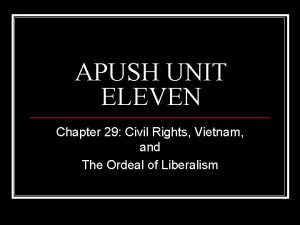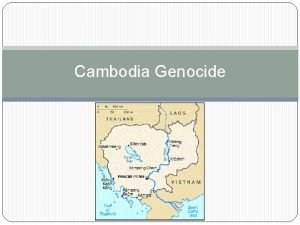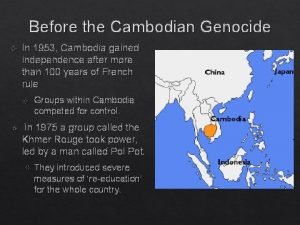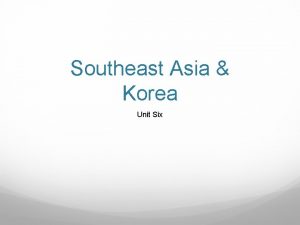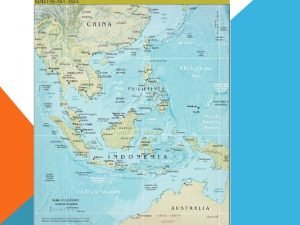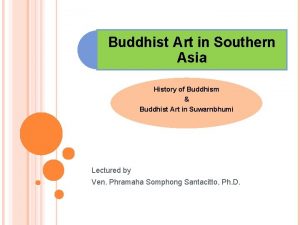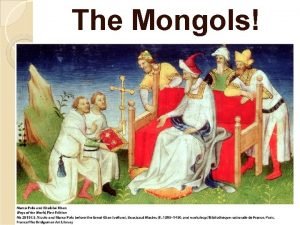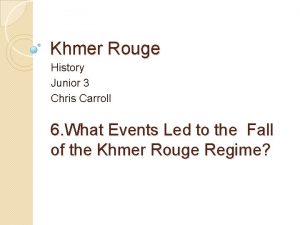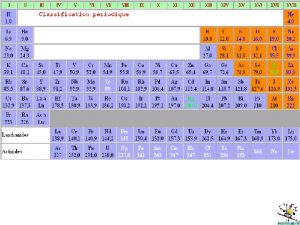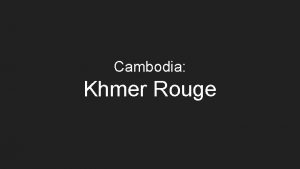Khmer Rouge Path to Power and Reign Junior








- Slides: 8

Khmer Rouge. -Path to Power and Reign Junior 3 History

KPRP Second Congress � (Kampuchean People's Revolutionary Party) � The region Pol Pot and the others moved to (from Paris) was inhabited by tribal minorities, the Khmer Loeu, whose rough treatment (including resettlement and forced assimilation) at the hands of the central government made them willing recruits for a guerrilla struggle (Khmer Rouge). In 1965, Pol Pot made a visit of several months to North Vietnam and China. He received some training in China, which had enhanced his prestige when he returned. Despite friendly relations between Norodom Sihanouk and the Chinese, the Chinese kept Pol Pot's visit a secret from Sihanouk. In September 1966, the party changed its name to the Communist Party of Kampuchea (CPK). � � �

� � � The party leadership endorsed armed struggle against the government, then led by Sihanouk. In 1967, several smallscale attempts at insurgency were made by the CPK but they had little success. In 1968, the Khmer Rouge was officially formed and its forces launched a national insurgency across Cambodia (Cambodian Civil War). Though North Vietnam had not been informed of the decision, its forces provided shelter and weapons to the Khmer Rouge after the insurgency started. Vietnamese support for the insurgency made it impossible for the Cambodian military to effectively counter it. For the next two years the insurgency grew as Sihanouk did very little to stop it. As the insurgency grew stronger, the party finally openly declared itself to be the Communist Party of Kampuchea (CPK).

Instability from Sihanouk � � After Sihanouk showed his support for the Khmer Rouge by visiting them in the field, their ranks swelled from 6, 000 to 50, 000 fighters. Many of the new recruits for the Khmer Rouge were apolitical peasants who fought in support of the King, not for communism, of which they had little understanding. Sihanouk's popular support in rural Cambodia allowed the Khmer Rouge to extend its power and influence to the point that by 1973 it exercised de facto control over the majority of Cambodian territory, although only a minority of its population. Many people in Cambodia who helped the Khmer Rouge against the Lon Nol government thought they were fighting for the restoration of Sihanouk

The End of the Civil War �By 1975, with the Lon Nol government running out of ammunition, it was clear that it was only a matter of time before the government would collapse. On April 17, 1975 the Khmer Rouge captured Phnom Penh

Foreign Involvement � The relationship between the massive carpet bombing of Cambodia by the United States and the growth of the Khmer Rouge, in terms of recruitment and popular support, has been a matter of interest to historians. Some historians have cited the U. S. intervention and bombing campaign (spanning 1965– 1973) as a significant factor leading to increased support of the Khmer Rouge among the Cambodian peasantry

�“…the US bombing and ground invasion plunged Cambodia into the chaos Sihanouk had worked for years to avoid. ” �(Shawcross)

Other foreign causes to the Khmer Rouge gaining power. � The Vietnamese intervention in Cambodia, launched at the request of the Khmer Rouge, has also been cited as a major factor in their eventual victory. � Vietnam later admitted that it played "a decisive role" in their seizure of power. � China "armed and trained" the Khmer Rouge during the civil war and continued to aid them years afterward. � The UN sided with the CGDK (Coalition Government of Democratic Kampuchea), which included the Khmer Rouge, against the Vietnamese-backed People's Republic of Kampuchea.
